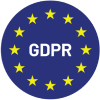If you’ve ever conducted a survey, you probably thought you were getting pretty accurate insights about your audience, correct? Especially if you made sure that the survey itself is short, engaging, and maybe even incentivized.
But what if I were to tell you that your results might still be skewed without you even realizing it? Here’s where biases come into play when it comes to survey distribution and analytics. Whether it’s who you’re asking, when you’re asking, and how you’re analyzing the results, biases can seriously distort the truth behind the numbers.
Once you’ve carefully designed a bias-free survey, it’s important to take a closer look at the next steps: distribution and analytics. To ensure you perfect the process on your next project, here is a list of the most common biases at play as you get started with survey distribution and analytics.
Bias in survey distribution
This part can arguably be the most difficult, especially if you’re struggling to find the right audience to fit your profile. However, it’s also crucial to ensure you get valuable and reliable insights. After all, inaccurate data is a lot worse than no data at all. So, the next time you’re trying to finalize your survey distribution process, ensure that you enlist the help of others around you to maximize objectivity.
Bias Alert #1: Sampling bias
This refers to how some groups of people simply don’t get a fair chance at representation. It can happen due to a variety of reasons. For example, if you’re looking to see how a new product would fare in the market, it’s easiest just to reach out to your existing customer base and see what they think. But what if they aren’t the right audience for your new product?
While it might be a little more difficult to get responses from a wider audience, it’s essential if you want unbiased opinions, otherwise you’ll fall prey to the sampling bias.
Let’s fix that: Use diverse distribution channels to reach people from different segments. This way, you have a wider audience pool and can capture insights from numerous people (even those you might not have considered your ideal target audience!). If you have a set audience you need to work with, use random sampling to ensure that there is no bias in the people a survey is sent to. On the other hand, if you have a wide survey audience with numerous sub-groups, consider stratifying your samples so that each group gets a voice in the final results.
Bias Alert #2: Attrition bias
Why are participants dropping off? While it’s not surprising for a few people to drop off, what happens when a specific group of people abandons your survey? The remaining participants may give insights that are not representative of the whole. Watch out for attrition bias!
Imagine doing a long-term survey to understand employee satisfaction within your organization. You may be conducting this survey in multiple parts, but by the time the final survey rolls out at the end of the year, many of the employees who were dissatisfied might’ve already left the organization. As a result, the findings can show a much higher rate of satisfaction, leading you to believe that the employee experience has been improving steadily!
Let’s fix that: Take a closer look at your participants. Are they representative of your target audience? Go granular to identify similarities and patterns amongst those who abandoned your survey and take action to include them or account for the attrition in your analysis.
Bias in survey analytics
The results are in, but what does the data really tell you? When it comes to reading between the lines, you need to keep certain biases and fallacies in mind. After all, when you are banking on data to make informed decisions, it’s imperative that the answers you are counting on are unbiased and reliable!
Bias Alert #3: Overgeneralization fallacy
Have you noticed a low response rate or a small participant pool? Maybe hold off on believing the results and instead work on getting more responses.
Overgeneralization happens when you derive conclusions based on answers from a small group of people. This can be misleading, as the opinions of a few may not represent the preferences of the many.
Let’s fix that: Incentivize responses to get more answers rolling in, use reminders to nudge potential participants, and ensure your surveys are short. Long surveys can be overwhelming and lead to a higher rate of survey abandonment.
Bias Alert #4: Confirmation bias
Have you ever wanted a product so bad that your brain homed in on the one positive review, reinforcing your excitement about it? What you might’ve ignored were the dozens of less excited or even negative reviews the product had.
That’s the same when it comes to surveys. If you are certain about what the results will be, it’s easy to only pay attention to answers that confirm this bias. After all, data can tell you the story you want, or it can give you the truth, it’s all a matter of interpretation!
And yes, this is a repeat from the list of survey design biases we covered previously. It’s only human to keep our hopes in mind, but try to keep them out of your survey at every stage!
Let’s fix that: The first step to eliminating confirmation bias is to look at the whole dataset. Is there anything you’ve missed? Next, use statistical significance where necessary to analyze data. This can help you be more objective in your analysis. Finally, rope in a pair of fresh eyes to look at your results. Having an objective third party can provide a different perspective and even point out if confirmation bias has joined the group chat.
Bias Alert #5: Post hoc fallacy
The answers are in, and it’s time to read between the lines! You might notice a strong apparent correlation between people who, for example, drink more coffee, and those who report higher levels of productivity at work. It’s easy to assume that higher coffee consumption leads to increased productivity, right? But is that really the cause?
Watch out for the post hoc fallacy! Taken from the Latin phrase post hoc ergo propter hoc, it suggests that the second thing happened because it came after the first thing. Is it possible that one thing causes the other? Sure, but it cannot be assumed — making this a common fallacy.
In the case of the coffee example, we can’t assume that coffee makes people more productive. Maybe those same people got more sleep the night before, have better organizational habits, or… well, just about any other variables!
Let’s fix that: Isolate variables and keep a control group to truly see the impact of one on the other. Avoid providing absolute conclusions unless the connection is explicit.
Bias Alert #6: Survivorship bias
This is a continuation of the attrition bias. You’re getting answers, but are they representative? Survivorship bias happens when you only consider responses from a certain group of people, thereby skewing your perspective.
Let’s fix that: The easiest way to eliminate survivorship bias is to first identify its existence. Include a broader sample in your survey to minimize survivorship bias, track survey abandonment to identify any pattern if it exists, and finally, account for the bias. Use weighted average and data modeling to ensure you get a more accurate analysis.
Reducing bias, improving results
A beautifully designed survey can keep your participants engaged, but it’s of no use if you don’t reach the right audience to begin with! What’s more, even if you’ve cracked the first and second step of the process, your results will be worthless if you can’t analyze the results in an objective manner. That’s why it’s important to perfect every step of the survey process.
If this feels overwhelming, you are not alone. At Sogolytics, our team of experts is on call 24×7 to help you brainstorm your next project and assist you in optimizing every step of the process. Simply drop us a message, and we’ll look forward to connecting!














